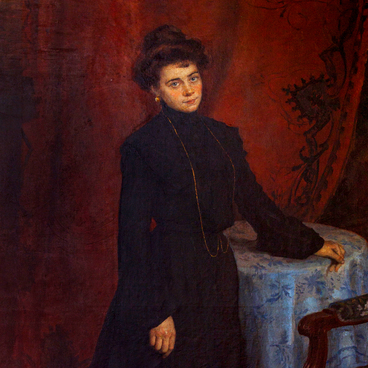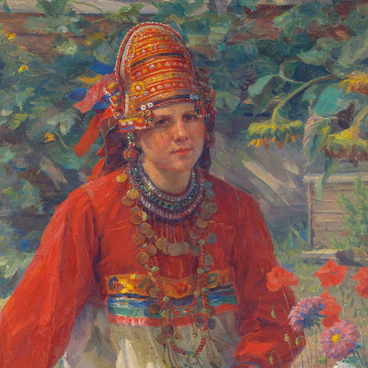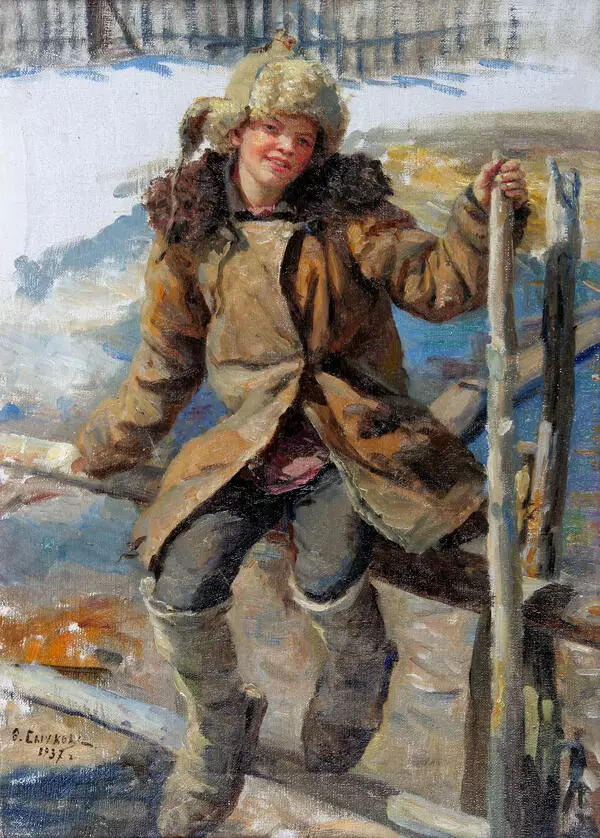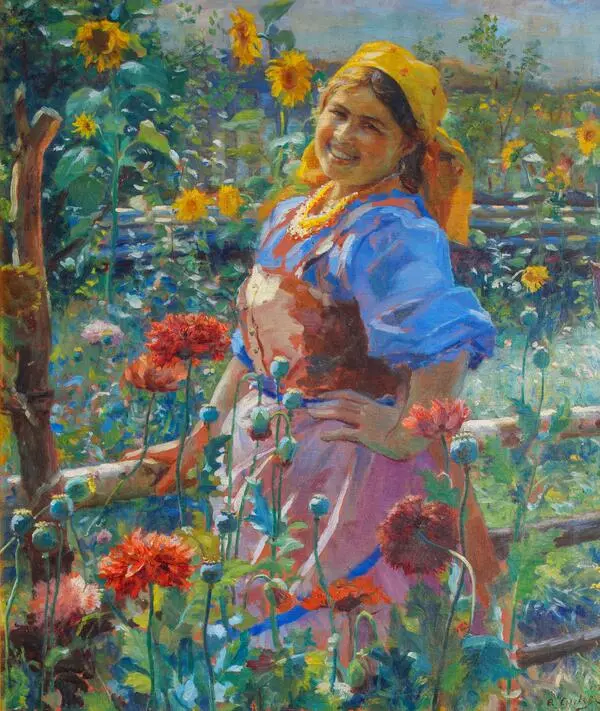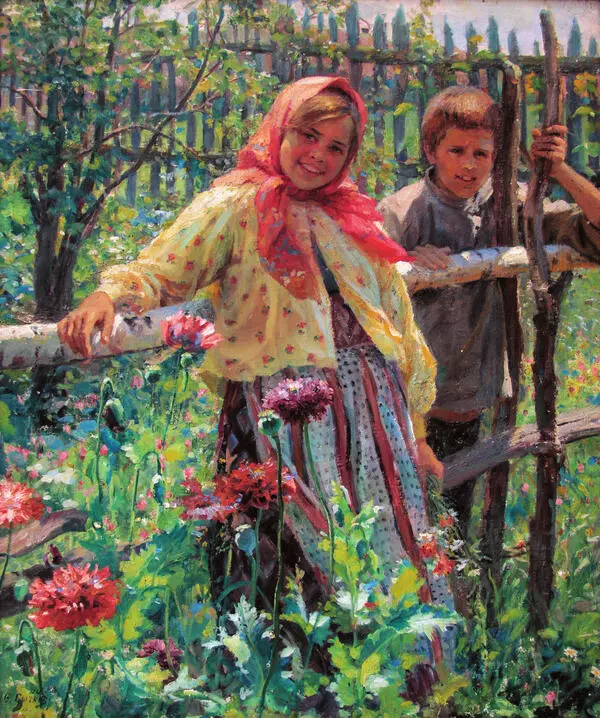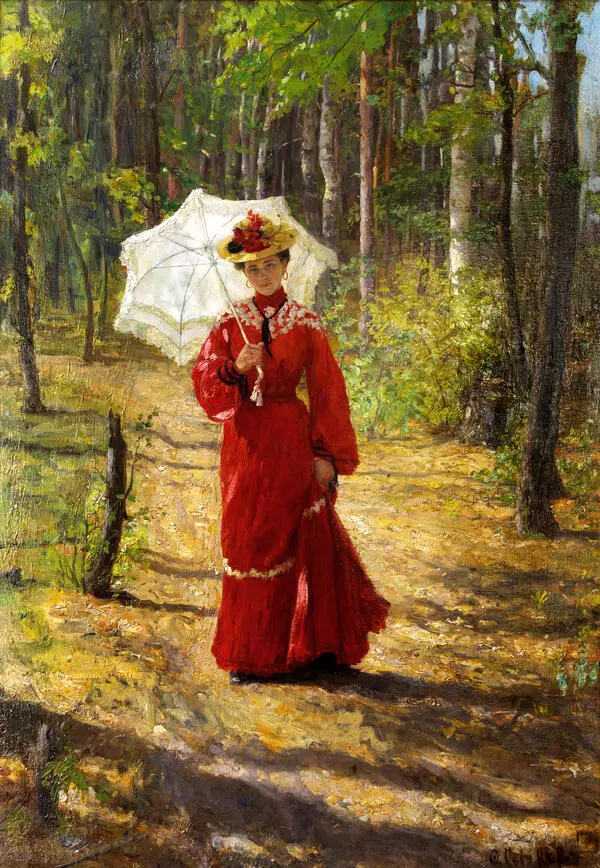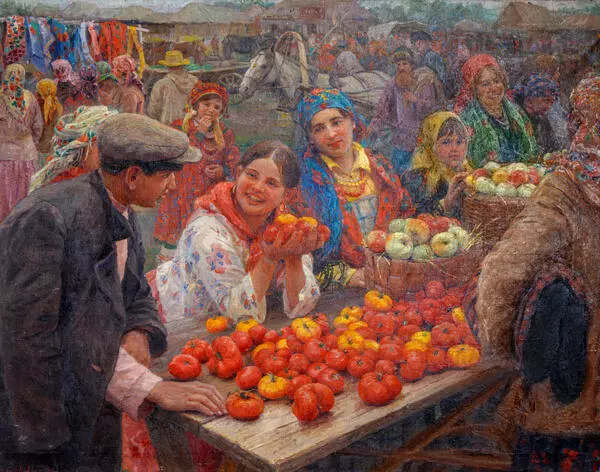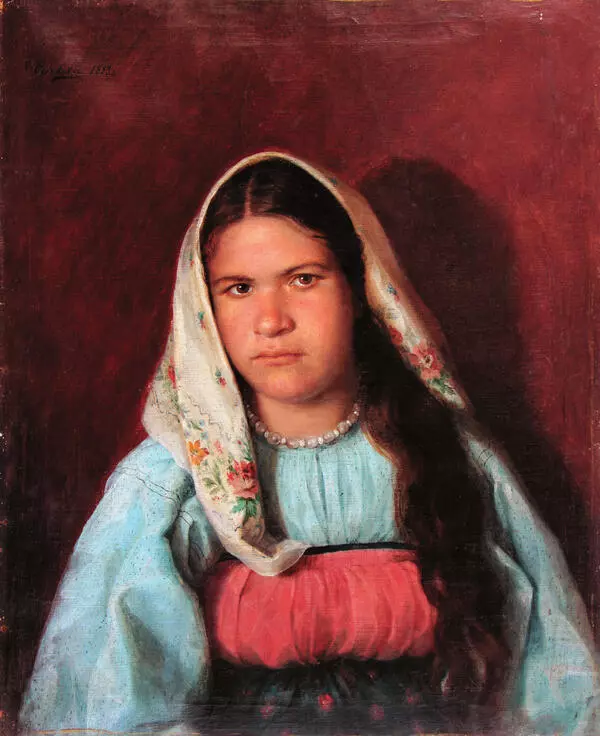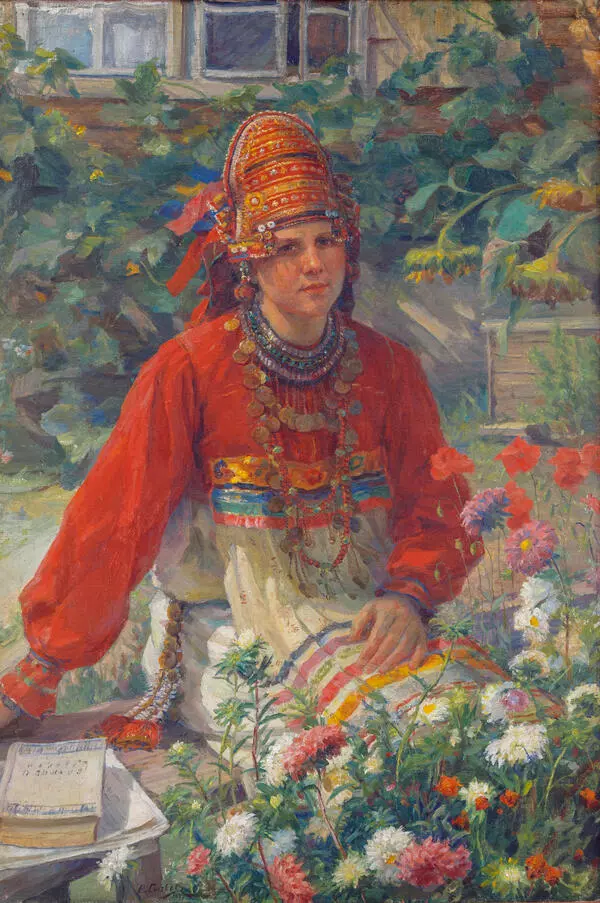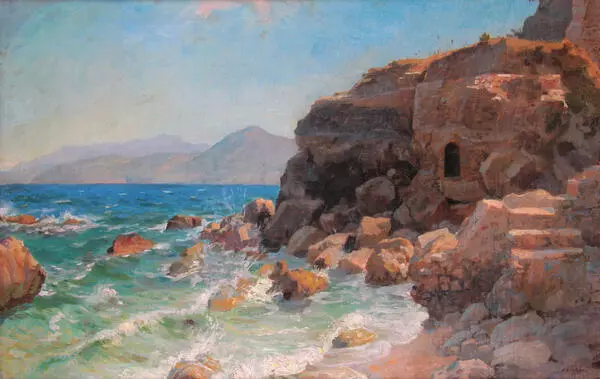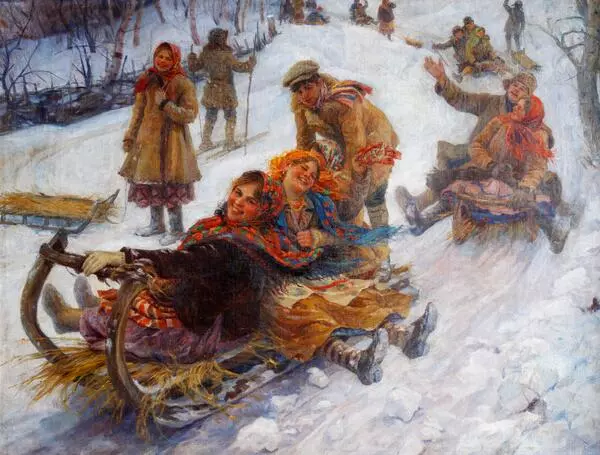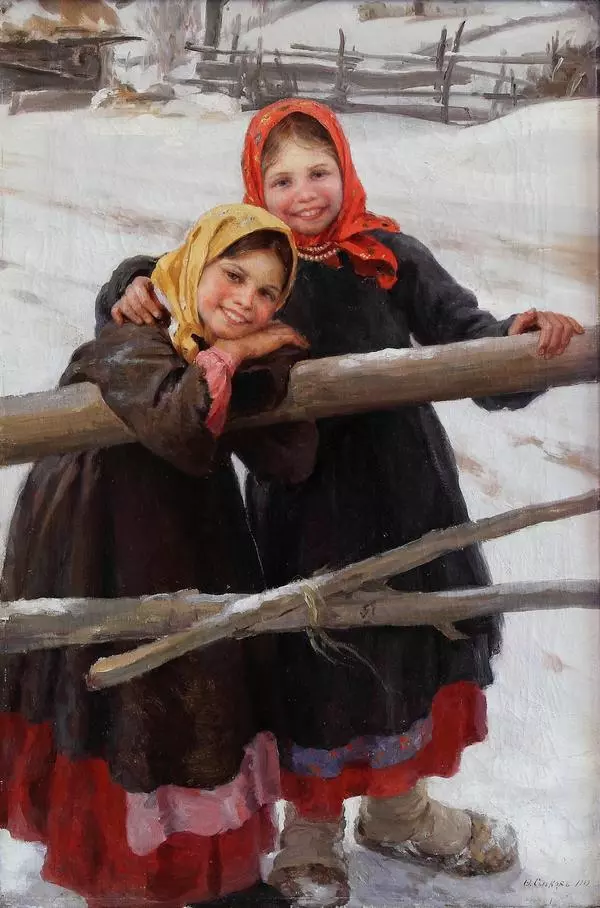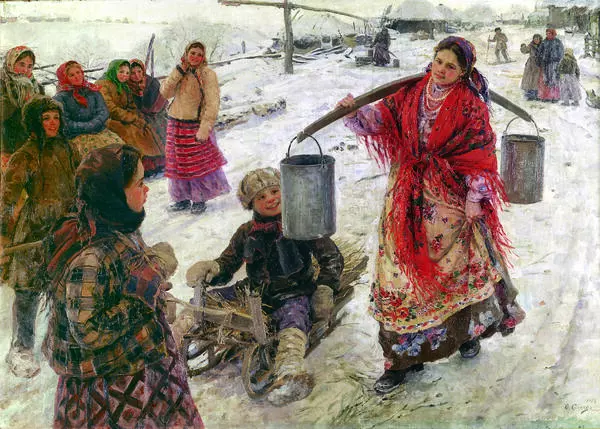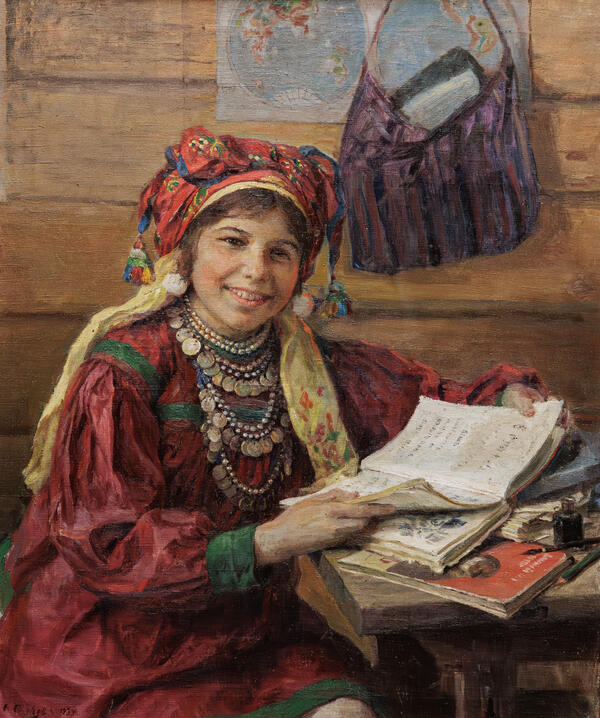This portrait was created in 1931. It depicts Fedot Sychkov’s friend and colleague — artist Ivan Silych Goryushkin-Sorokopudov. Sychkov depicted him without the traditional attributes of a painter: the artist does not have brushes or a palette in his hands. An elderly man sits on a garden bench and does not pose at all: he is immersed in his calm thoughts. But the technique of the portrait hints at Ivan’s art: executed in soft tones and delicate in its color scheme, the painting gives an idea of how Ivan himself liked to paint. Goryushkin-Sorokopudov was famous for his landscapes and historical paintings, distinguished by a lyrical and contemplative character.
The life paths of Fedot Sychkov and Ivan Goryushkin-Sorokopudov had a lot in common. As agemates, they were born in the poorest peasant families: Sychkov’s father was a burlak (person who hauled barges and other vessels upstream) in the village of Kochelayevo, Penza Governorate; whereas Goryushkin was born in the village of Naschi, Tambov Governorate, in the family of a soldier who also worked as a burlak. Fedot lost his father at the age of 12; Ivan orphaned even earlier and was brought up by the distantly related to him Sorokopudov family. They were meshchane (Russian term for “lower-middle class”) from Saratov. He added their last name to his own.
Since childhood, both of them experienced a lot of bitterness and humiliation. But these hardships did not break their persistent passion for art. The young talents entered the St. Petersburg School of Painting, Sculpture, and Architecture at the Academy of Arts. Pavel Kovalevsky and Ilya Repin trained them both. The latter spoke highly of them. In turn, both students later on in their careers considered Repin as the teacher who contributed to their lives the most. By the time they graduated from the Academy, both Sychkov and Goryushkin-Sorokopudov were already renowned and well-off artists. Their artworks were displayed at prestigious exhibitions. Magazines in St. Petersburg printed their works many times.
Goryushkin-Sorokopudov lived in Ivanovka since 1908; Sychkov returned to Kochelayevo immediately after 1917. Artists stayed in touch; they met each other at exhibitions in Moscow; visited each other and worked together en plein air. Sychkov noted in one of his letters that their cooperation and communication “must develop a strong energy, inspire to work — here comes the competition and many other things that give great mood and pleasure to the artist.’
The portrait of Goryushkin-Sorokopudov was created at his summer house in Ivanovka near Penza. Penza Art Gallery houses a portrait of Sychkov, drawing sketches in front of his easel. Goryushkin-Sorokopudov painted it in 1934.
The life paths of Fedot Sychkov and Ivan Goryushkin-Sorokopudov had a lot in common. As agemates, they were born in the poorest peasant families: Sychkov’s father was a burlak (person who hauled barges and other vessels upstream) in the village of Kochelayevo, Penza Governorate; whereas Goryushkin was born in the village of Naschi, Tambov Governorate, in the family of a soldier who also worked as a burlak. Fedot lost his father at the age of 12; Ivan orphaned even earlier and was brought up by the distantly related to him Sorokopudov family. They were meshchane (Russian term for “lower-middle class”) from Saratov. He added their last name to his own.
Since childhood, both of them experienced a lot of bitterness and humiliation. But these hardships did not break their persistent passion for art. The young talents entered the St. Petersburg School of Painting, Sculpture, and Architecture at the Academy of Arts. Pavel Kovalevsky and Ilya Repin trained them both. The latter spoke highly of them. In turn, both students later on in their careers considered Repin as the teacher who contributed to their lives the most. By the time they graduated from the Academy, both Sychkov and Goryushkin-Sorokopudov were already renowned and well-off artists. Their artworks were displayed at prestigious exhibitions. Magazines in St. Petersburg printed their works many times.
Goryushkin-Sorokopudov lived in Ivanovka since 1908; Sychkov returned to Kochelayevo immediately after 1917. Artists stayed in touch; they met each other at exhibitions in Moscow; visited each other and worked together en plein air. Sychkov noted in one of his letters that their cooperation and communication “must develop a strong energy, inspire to work — here comes the competition and many other things that give great mood and pleasure to the artist.’
The portrait of Goryushkin-Sorokopudov was created at his summer house in Ivanovka near Penza. Penza Art Gallery houses a portrait of Sychkov, drawing sketches in front of his easel. Goryushkin-Sorokopudov painted it in 1934.




